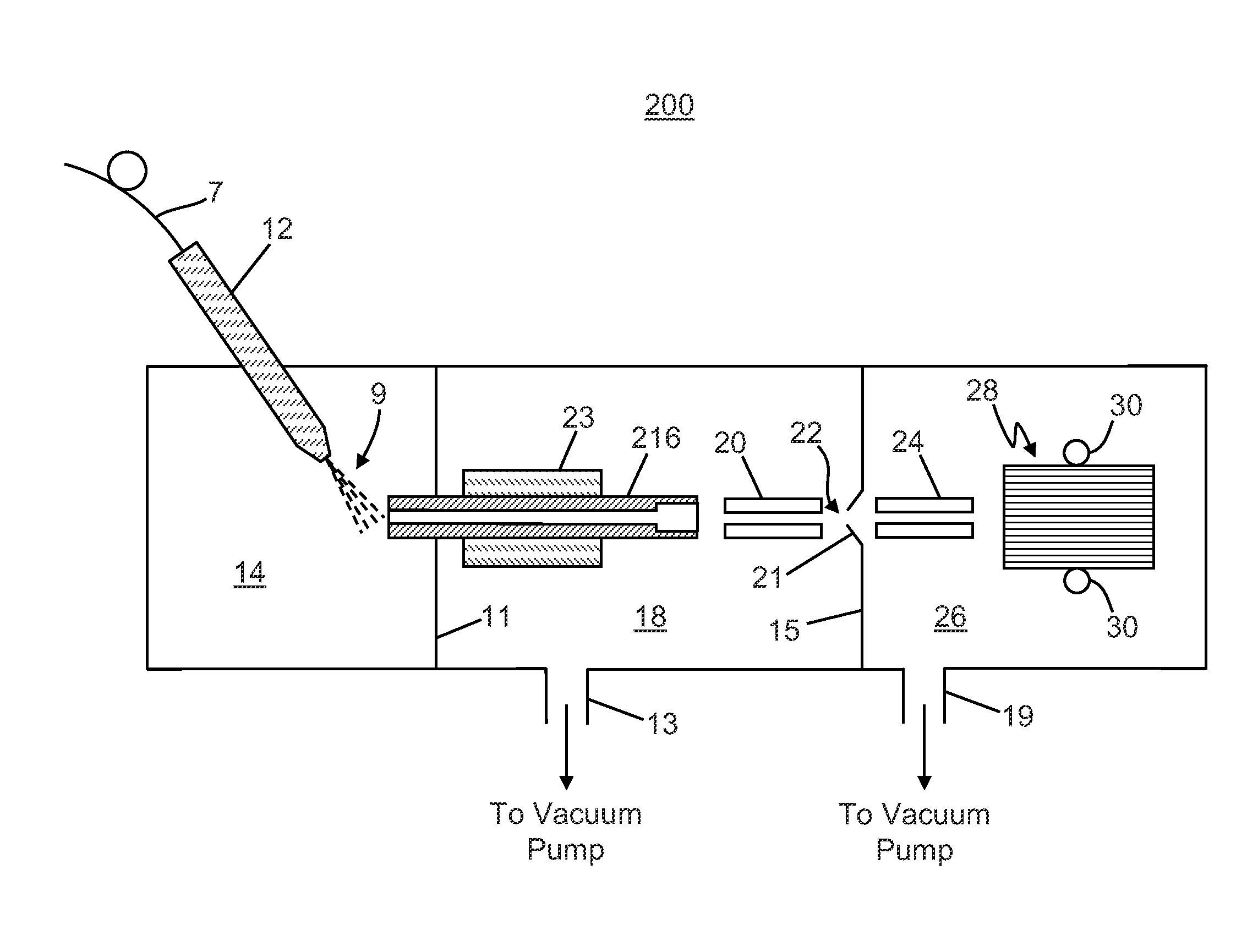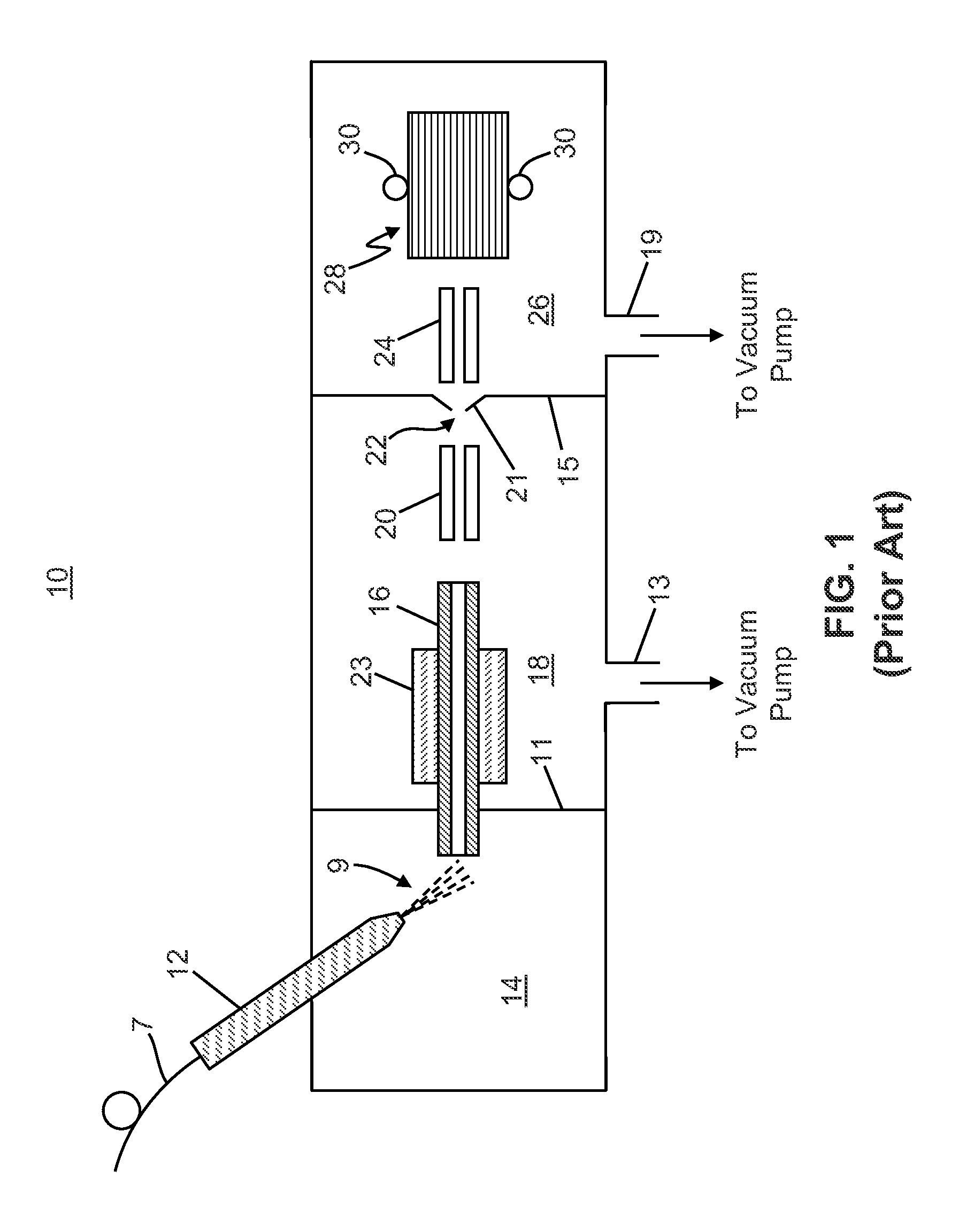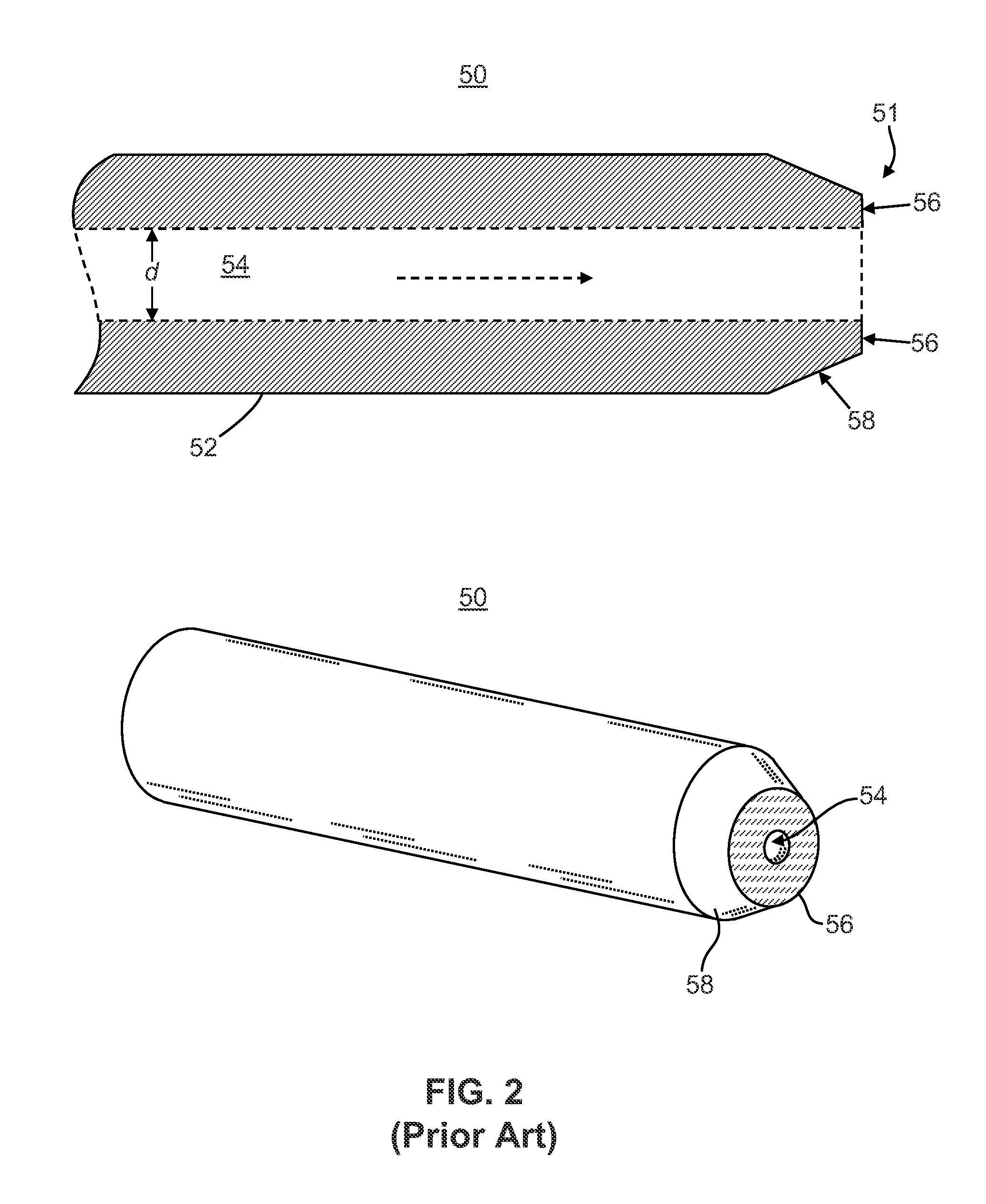Method and apparatus for an ion transfer tube and mass spectrometer system using same
a mass spectrometer and ion transfer technology, applied in the field of mass spectrometer systems, can solve the problems of less-than-optimal conditions for transferring ions across the vacuum interface, increased gas load, and suppression of certain ions based on their charge state, so as to reduce the effect of exit turbulence, reduce the occurrence of fragmentation of fragile ions, and increase the transmission of multiply charged ions
- Summary
- Abstract
- Description
- Claims
- Application Information
AI Technical Summary
Benefits of technology
Problems solved by technology
Method used
Image
Examples
Embodiment Construction
[0037]The following description is presented to enable any person skilled in the art to make and use the invention, and is provided in the context of a particular application and its requirements. Various modifications to the described embodiments will be readily apparent to those skilled in the art and the generic principles herein may be applied to other embodiments. Thus, the present invention is not intended to be limited to the embodiments and examples shown but is to be accorded the widest possible scope in accordance with the features and principles shown and described.
[0038]To more particularly describe the features of the present invention, please refer to FIGS. 3 through 18 in conjunction with the discussion below.
[0039]Referring to FIGS. 13 and 14, a heated capillary tube assembly 222 is illustrated. The capillary tube assembly includes a cylindrical heater 241 which is electrically heated via the heater wire 242. A capillary tube 243 extends axially through the heater. T...
PUM
 Login to View More
Login to View More Abstract
Description
Claims
Application Information
 Login to View More
Login to View More - R&D
- Intellectual Property
- Life Sciences
- Materials
- Tech Scout
- Unparalleled Data Quality
- Higher Quality Content
- 60% Fewer Hallucinations
Browse by: Latest US Patents, China's latest patents, Technical Efficacy Thesaurus, Application Domain, Technology Topic, Popular Technical Reports.
© 2025 PatSnap. All rights reserved.Legal|Privacy policy|Modern Slavery Act Transparency Statement|Sitemap|About US| Contact US: help@patsnap.com



